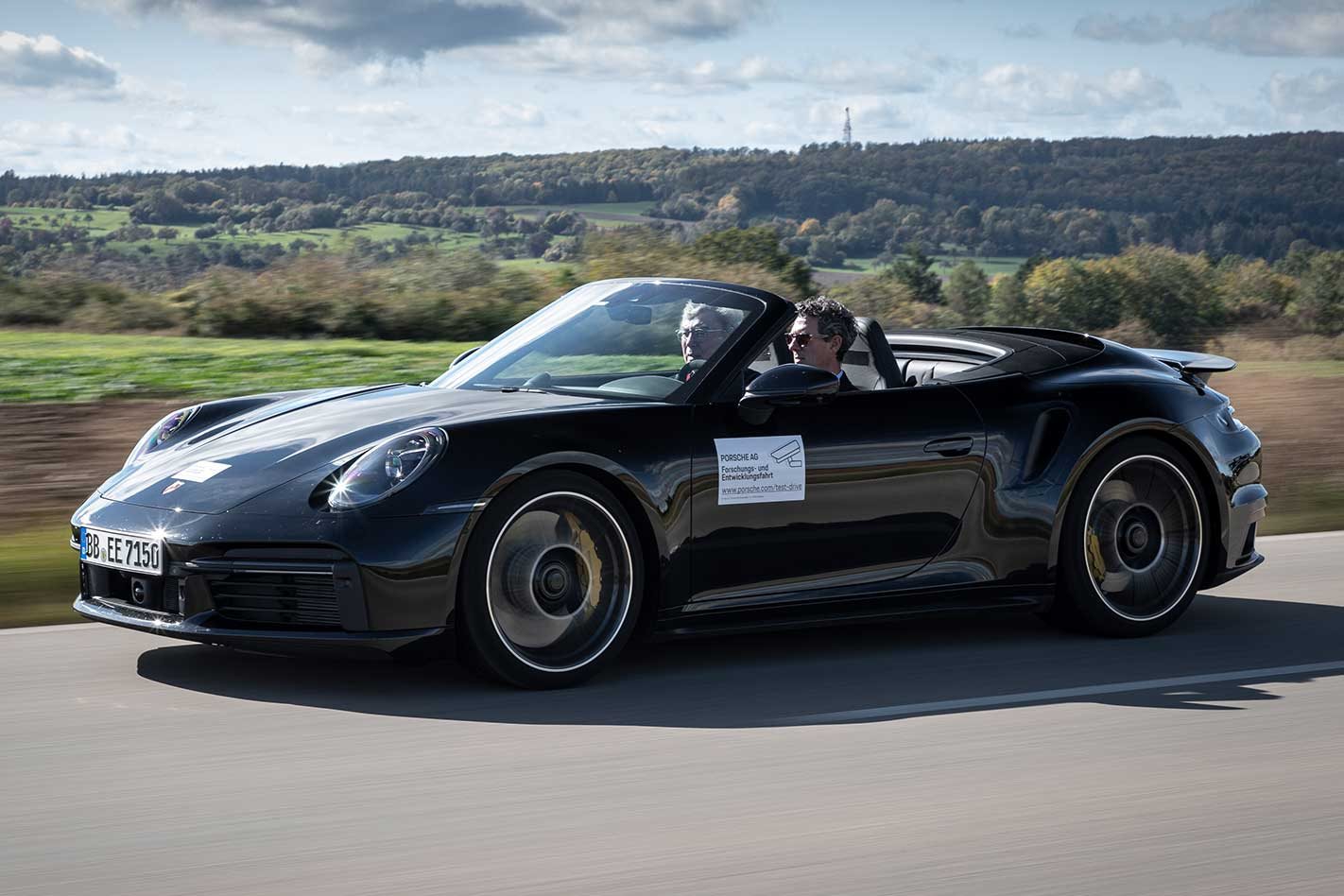All pre-production Porsches are, as a rule, painted solid black, only casually camouflaged with black tape, and they have all-black interiors with optional soft-shell black disguise pads here and there.
This monochromatic stealth car would look perfectly inconspicuous if it wasn’t for the four eye-catching, snow-white Caution! Experimental vehicle! stickers, which in Germany are mandatory in this era of battery-powered cars and potential electric shocks.
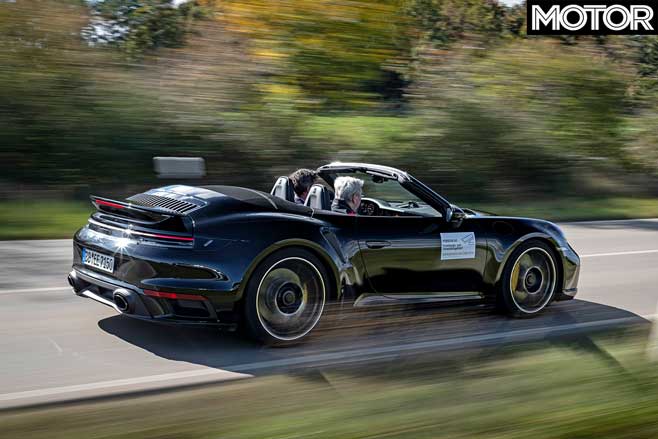
Although electrocution is not a risk when laying hands on the new top-of-the-line 992, the warning messages inadvertently distract spies from the changes made to the latest 911 Turbo S. Most significant are the redesigned rear apron-diffuser that accommodates the trademark four trapezoid endpipes; flush, multi-spoke lightweight wheels; bigger and slipperier side air intakes; slimmer and wider DRLs; restyled bumpers and a more elaborate ground-effect wingwork.
The 992 was developed under August Achleitner and his team, and contrary to popular expectations, the only battery installed in the new 911 Turbo drives the starter motor and supports the alternator – there is no mild hybrid, let alone a boost-effect 48V system.
“The benefits of partial electrification are marginal compared to the complex weight, packaging and cost issues,” Achleitner tells MOTOR. “Weight in particular is obviously critical for every sports car. Unfortunately you cannot de-content (remove features to reduce weight) a Turbo like a GT3 because the clientele would not tolerate it. Instead, the car gained a few extra kilos with additional convenience items and the new eight-speed PDK transmission. You would not believe the damage an extra set of gears does to the overall calorie count…”
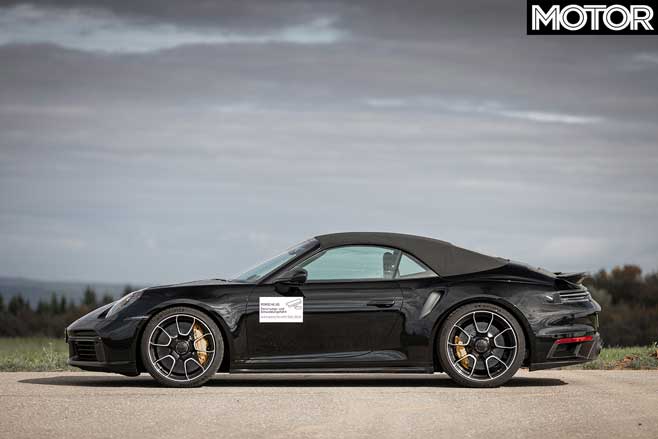
Unlike early Turbos, decried as ‘widow-makers’, more recent versions have been heavily bespoilered 911 iterations targeting the rich. The 996 and 997 Turbos in particular were known for straddling the boundary between sanitised faultlessness and budding boredom, were comprehensively kitted out with sound-deadening material and, starting with the 997 Turbo S, were no longer available with a manual gearbox.
“In this case, there wasn’t any real need for significant last-minute adjustments,” says new 911 product chief Frank-Steffen Walliser from the driver’s seat of our pre-release test car, “but I still feel we have steered the 992 Turbo fractionally more in a back-to-the-roots direction. To do so, even little things helped: stiffer joints, harder rubber bushings, tighter attachment points, modified spring and damper calibrations. What we definitely refrained from is turning a nicely balanced GT into a hard-edged street fighter.”
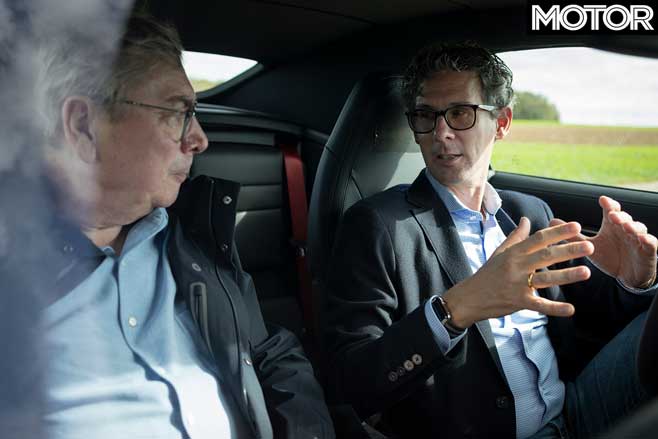
Walliser points out that we’re on the long road home, but I don’t grin because there’s a sudden transition from gentle breeze to gale-force storm. There is not enough time to ponder whether the driver is a certified lunatic or Mark Webber’s brother in arms, as the very first left-hander threatens to suck us in and spit out the remains.
But the very moment my lips begin to form the first line of Hail Mary, the front end grabs the last piece of tarmac before doom, the rear wheels follow a similar sabre-shaped arc, and we pull through, the fat rear end squatting down mid-corner like a sumo wrestler.
Little did I know at this point of the wild ride that foreplay is in Porschespeak merely a warm-up, that ESP can be switched off in two steps known as ‘please don’t’ and ‘oh-my-god’, that the prime mission of all-wheel drive and rear-wheel steering is to tighten the rope that separates experience from tragedy.

“Compliance is key, because compliance means control,” Walliser continues. “You want a sports car to respond in a sharp and positive manner, but the 911 Turbo is a little different since a super-quick or super-clever feedback could easily overshoot the target. The very last thing an engineer wants to do is unsettle or even scare the driver, who must always feel in charge, so a small margin for error here and there won’t hurt.”
No word about frightening the passenger, but that’s okay because all it takes for the co-pilot to catch the drift (!) is a little more time and trust. Trust in the cast-iron, sombrero-size brake discs, which measure 410mm up front and 390mm in the back.
Trust in the liquorice effect of the tyres, sized 255/35ZR20 and 315/30ZR21 respectively. Trust in the variable-rate, variable-effort steering that controls all four wheels, enhancing the manoeuvrability and solidifying the directional stability. And last but not least, trust in the black box and its army of sensors that must at all times be on the alert and cast the appropriate digital safety net.
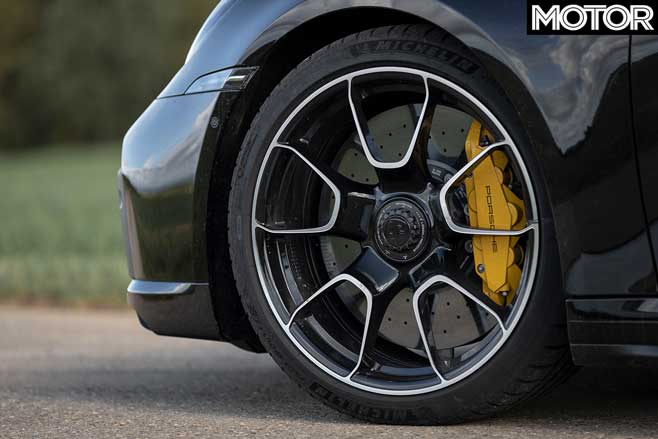
Body and brain can absorb plenty of input in 90 minutes, but beyond the subjective passengering impressions there are precious few hard facts available at this point, mainly because the homologation is not yet complete. We know that the new EA9A2 engine is a twin-turbo 3.8-litre flat-six, apparently rated at 485kW at 7000rpm and 800Nm at 2500-4000rpm. The non-S engine is allegedly good for 440kW.
Both versions are mated to the new close-ratio, eight-speed dual-clutch transmission. Top speed of 333km/h is reached in sixth gear; seventh is kind of an overdrive for long autobahn journeys, eighth is the long-legged darling of the environmentalist faction.
Like all Porsches, this one allows the driver to pre-set the preferred dance mode via a knob on the steering wheel. Unless you’re running on empty, it’s best to forget Normal, which shifts up so early that this monster finds itself pottering along at 80km/h and 1100rpm in sixth, attempting to save our planet while making your nerve strings snap. You owe yourself Sport or perhaps even Sport Plus, although the latter is stubbornly dedicated to high revs and low gears. Best to compile a personalised selection of noise, grunt, throttle response, shift action and ride comfort.
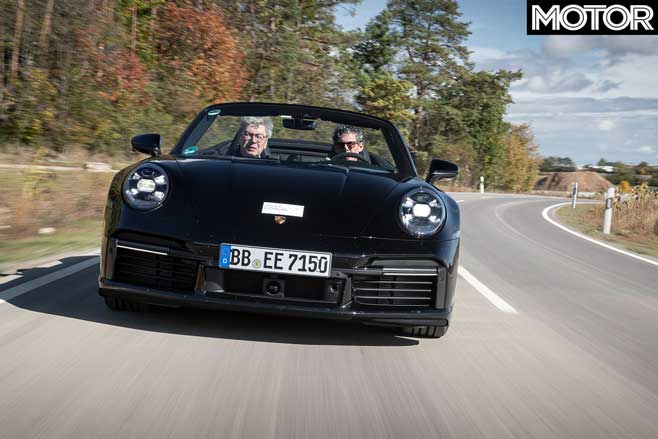
According to the Weissach grapevine, the hottest 992 can accelerate to 100km/h in 2.7sec, which is phenomenally quick for a vehicle that – unlike an EV – does require an extra blink of the eye to summon maximum torque. And it can beam itself to 200km/h in about 8.5sec. But the two-tenths acceleration advantage and 3km/h increase in maximum speed do not lift the high-end 992 tangibly above its predecessor. Instead, it’s the finer points that make the difference.
When Walliser had to leave, we went out again with a Porsche works driver for a second exploration round. On a busy Friday afternoon, one needs to know where to go to avoid traffic, and Jonas knew. For a start, he activated the sports exhaust, a new option for the Turbo that wilfully brushes the gentleman-driver character of the car against the grain.
The same goes for the spring and damper setting in Sport Plus and the weight of the steering, of which he says: “It trades some of the lightness and the relatively strong self-centring force for a more progressive and somewhat beefier action. Nuances only, for sure, but when you work with the 992 Turbo day in and day out, you quickly recognise the benefits, which include a more direct and transparent connection between the road and the palms of the driver, let alone the seat of the pants. Advantage number two is a better tied-down chassis, which still won’t tramline or is upset by vagaries of the road.”
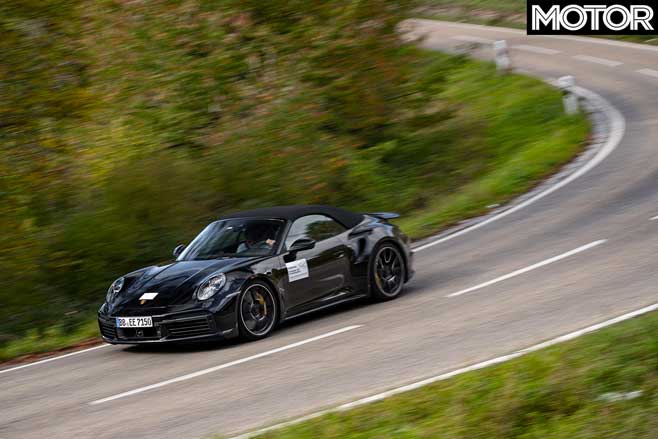
After a pause, he adds: “When encountering unilateral surface irregularities, the Turbo S does feel admittedly busier than a Carrera 4S, and the comfort zone between information and interference is narrower. But I for one would happily pay this price in exchange for the enhanced haptic clarity.”
Makes sense. Could I perhaps give it a go and…? Oh, I understand. Too bad.
When conquering the Black Forest, you drive through thousands upon thousands of trees, and rarely in a straight line. But with the ESP on snooze and with a man in charge who knows every second fir by first name, some bends leave fatter exclamation marks on the passenger’s hard-drive than others. Once again, it’s all about trust and ability.
Equipped with marginally beefier rear wings and an accordingly wider track, the 992 Turbo S is almost as aggressively tyred as the GT2. The tiny deficit in contact patch on roads like these is easily compensated by the broader calibration of the spring and damper settings.
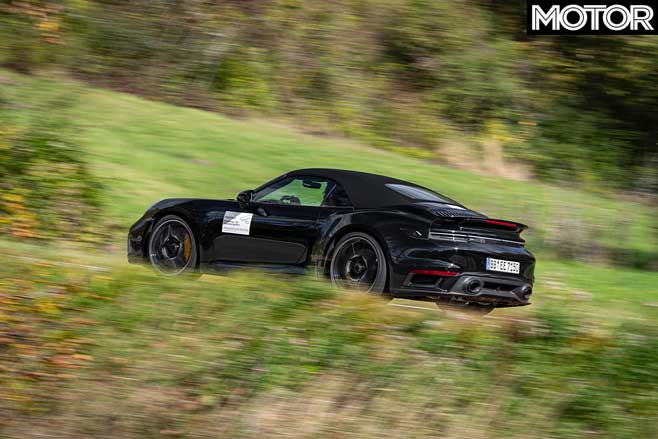
The rear-wheel steering is not quite as slam-dunk radical as in the GT2, and then there is the added benefit of all-wheel drive. It’s the never wavering turn-in grip that completes the ten-out-of-ten handling score. A quick flick at the wheel, a stab at the throttle, a moment’s wait followed by a dab of opposite lock and, voila, another creamy slide is safely in the can. I just sit there and watch in awe, gaping, wide-eyed, hoping for an encore.
The new Turbo gets a much more elaborate aero pack, still with a fixed rear wing but its surface area increased by about 20 per cent for even more downforce and straight-line sure-footedness. The nose sports bigger air intakes to cool brakes and radiators, and incorporates a venturi-effect, bumper-to-underfloor ramp-lip-exit device that keeps the front end true at high speed.
The new engine is fed a bigger dose of air straight into the intake manifold, and exhales through an intestine exhaust system that sounds more Harley than Porsche at idle. Despite the intrinsic choke effect of the mandatory particulate filter and the absence of an electric booster, the high-revving, low-end-torque six-cylinder obeys throttle orders with the hurried efficiency of an infallible footman.
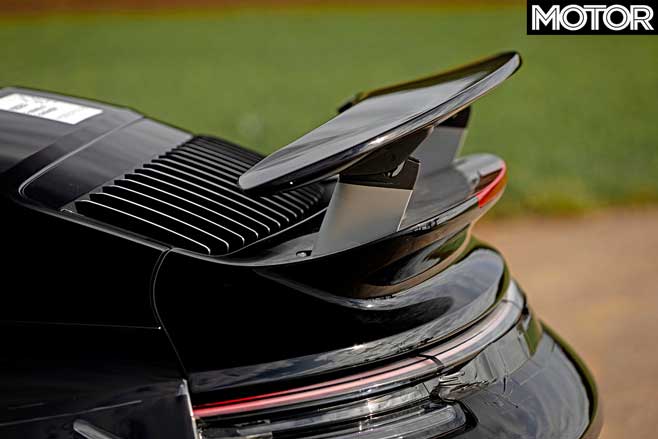
We return the car in the nick of time, a shaken and stirred scribbler trailed by a provocatively relaxed driver. Still sorting thoughts and impressions, one thing is clear from the moment the passenger door drops shut: just as the GT3 with touring pack moved one step further away from the RS model, the new Turbo S is taking half a step back towards its original DNA, having grown a little too cushy since the raw 930 started the breed in 1974.
With the transmission in Manual and the drive mode selector in Sport, the focused mindset prepared to use high revs and explore the car’s lofty limits, the extra excitement this Turbo generates compared to its predecessor may not reveal itself immediately. The seconds gained when whipping this Porsche from A to B are of minor importance. What matters more is the how, not merely the how fast.
Of course, evolution and progress are gradual. But according to the physical seismograph and the mental processor linked to it, the ultimate 992 (at least for the time being) is now a little more involving, a little more responsive and a little more agile overall. A Turbo S with a twist, so to speak. This is a car conceived to satisfy repeat customers yet perfectly capable of attracting new buyers who honour a spicier blend of sportiness and convenience.

